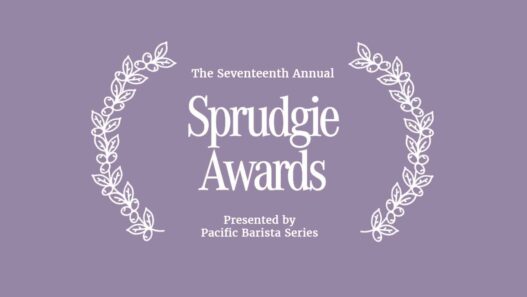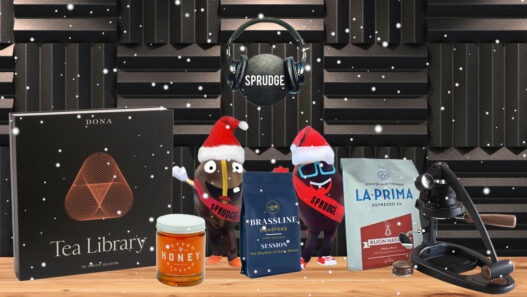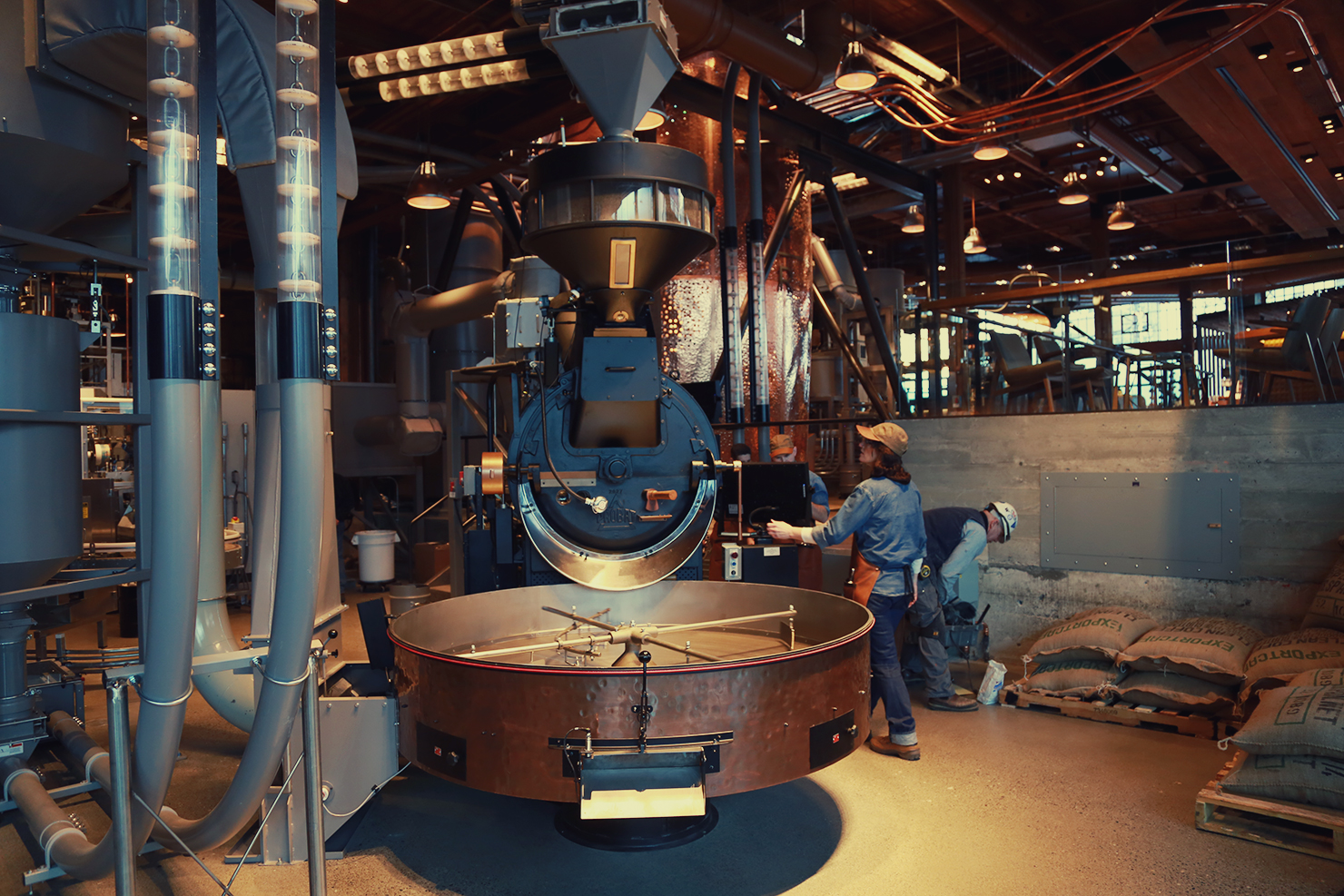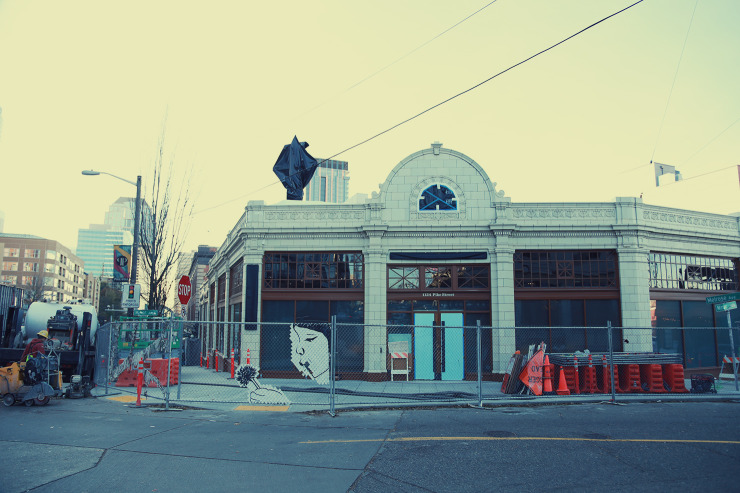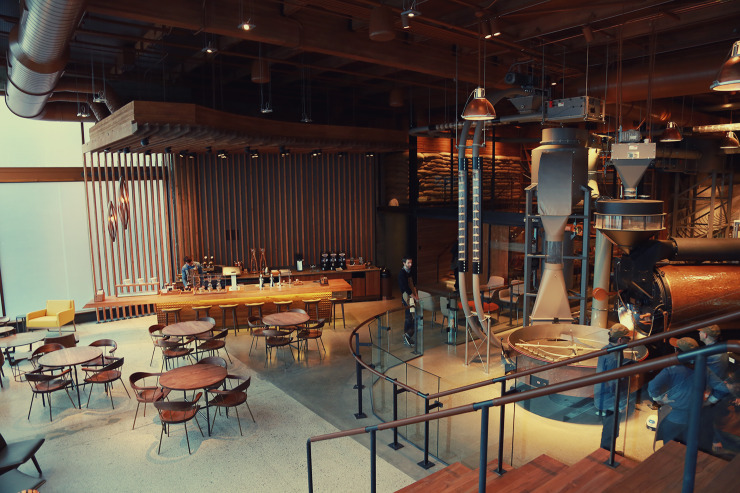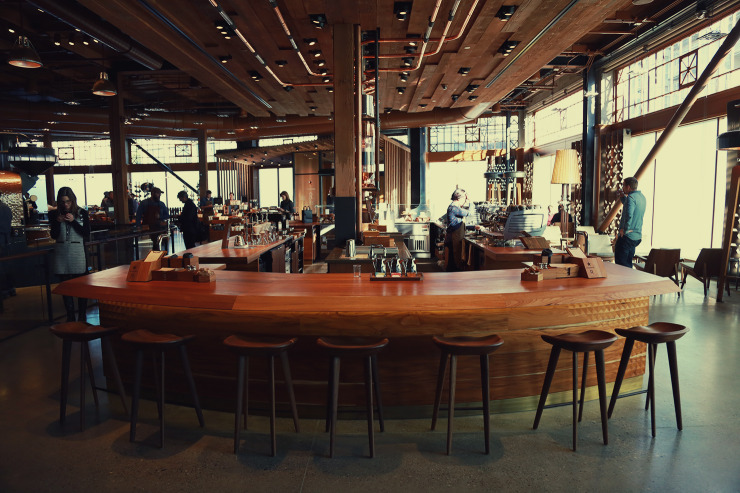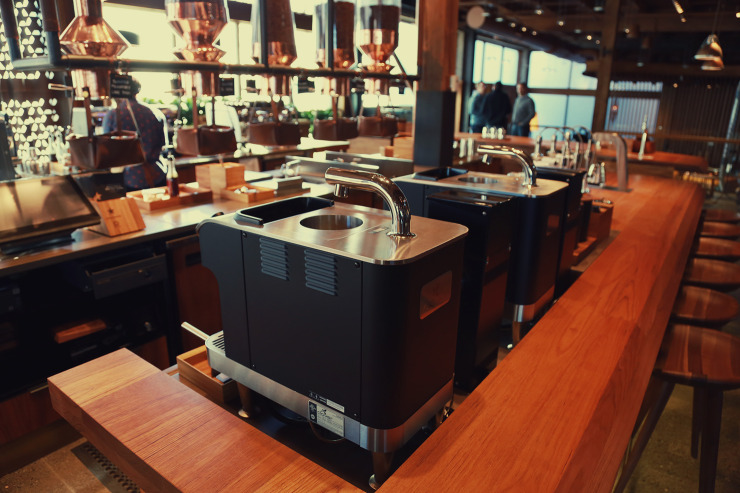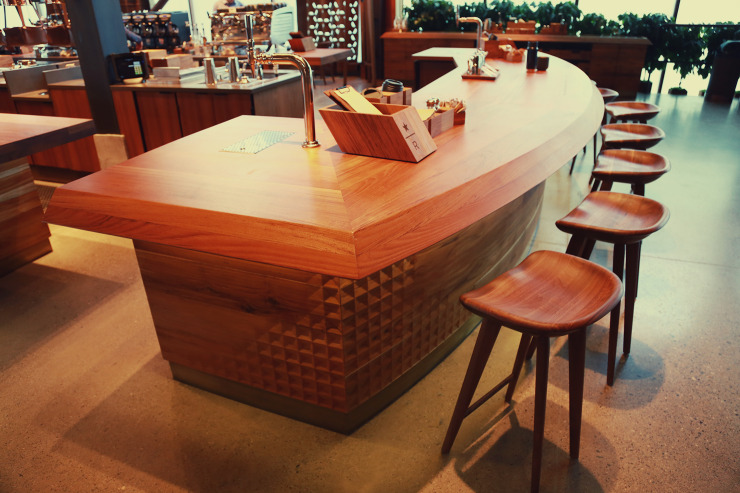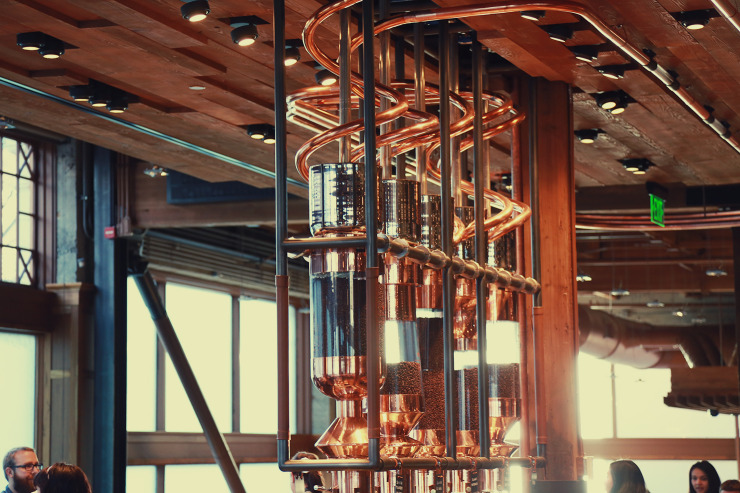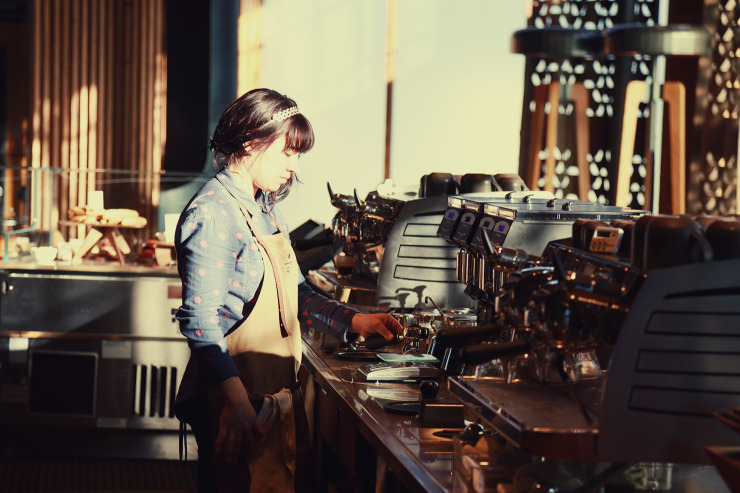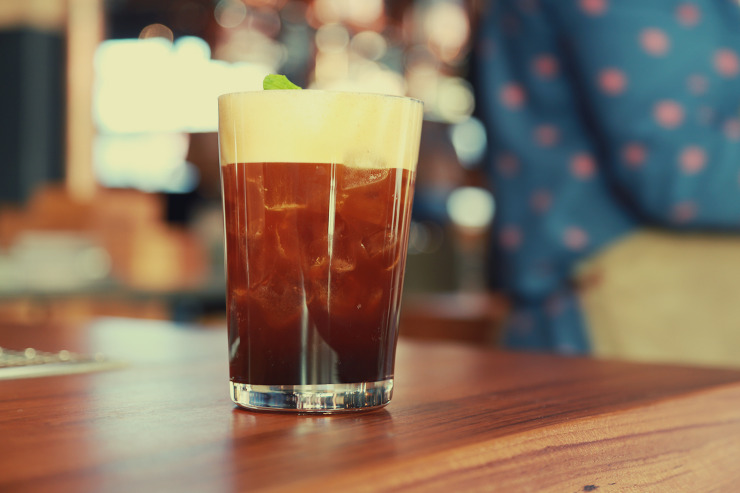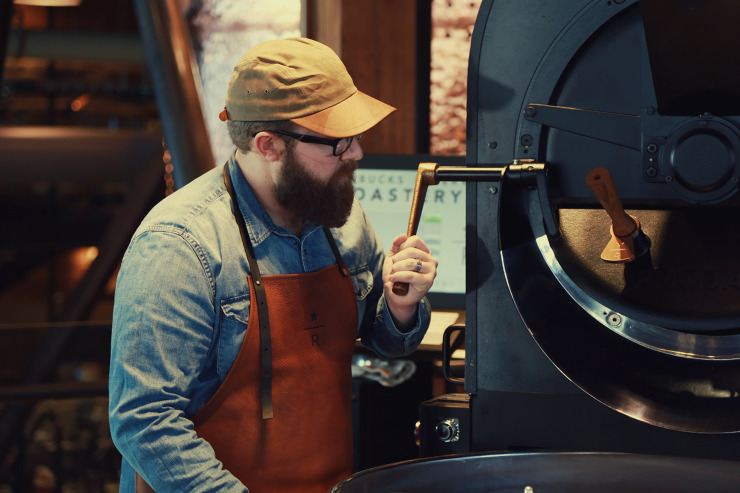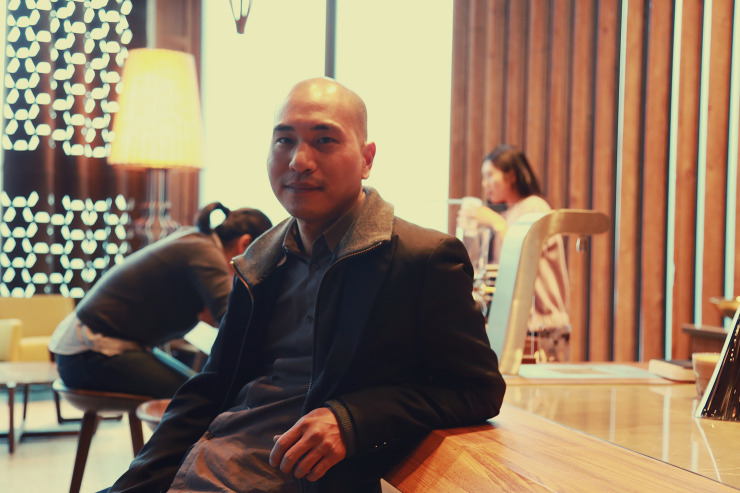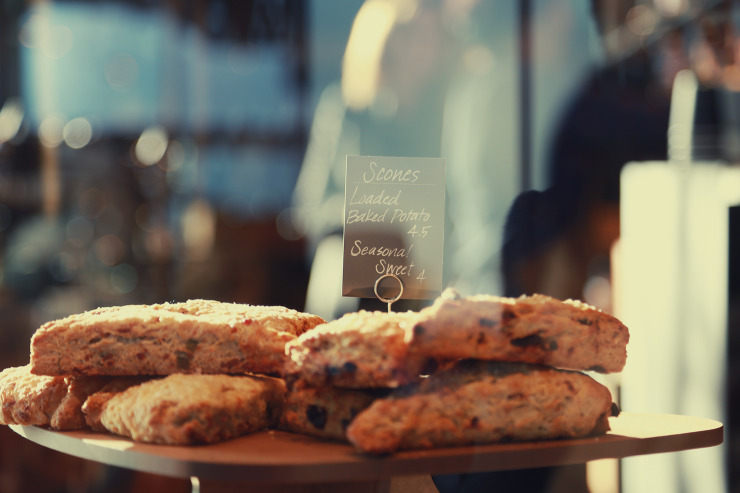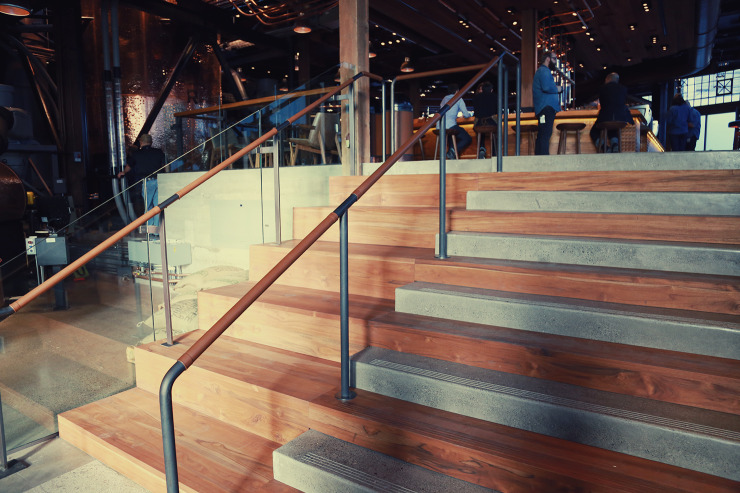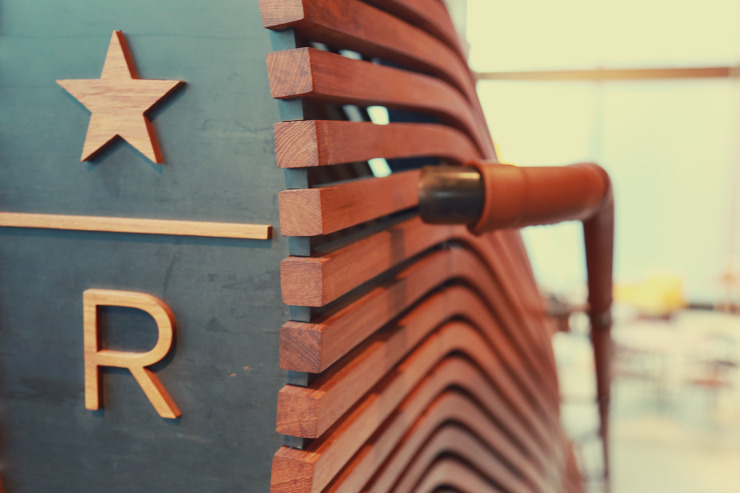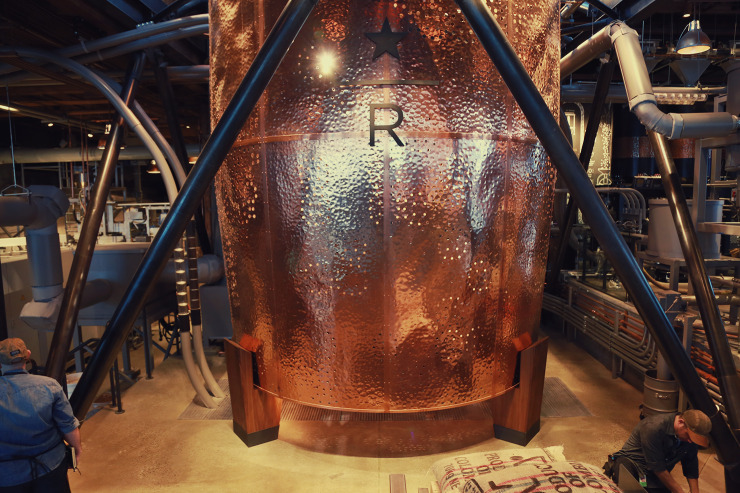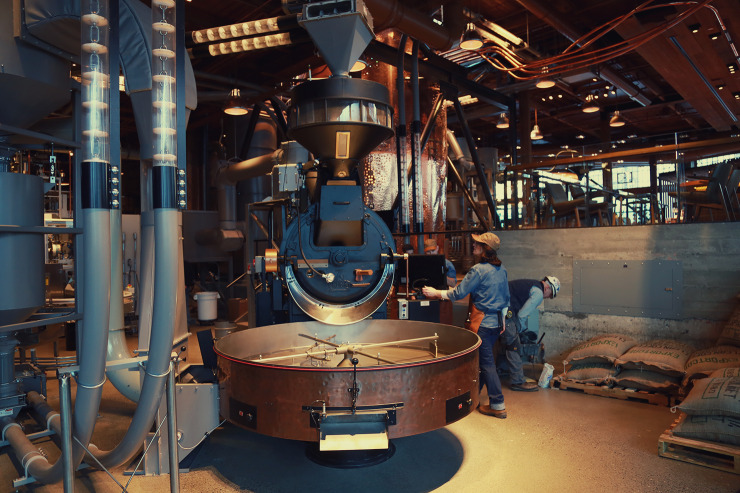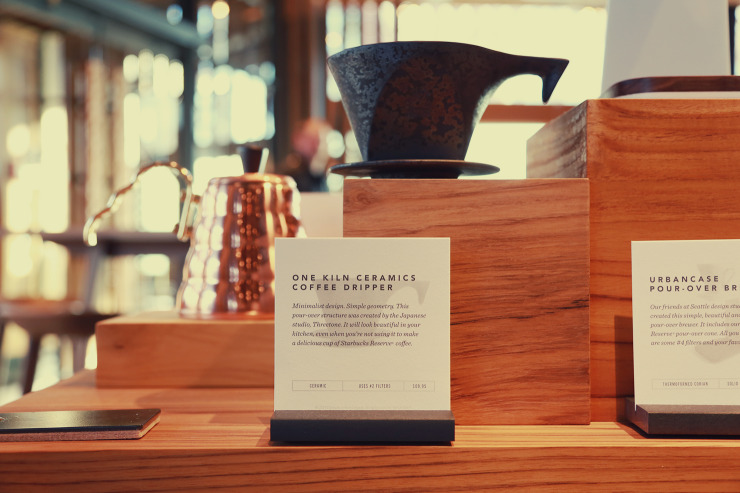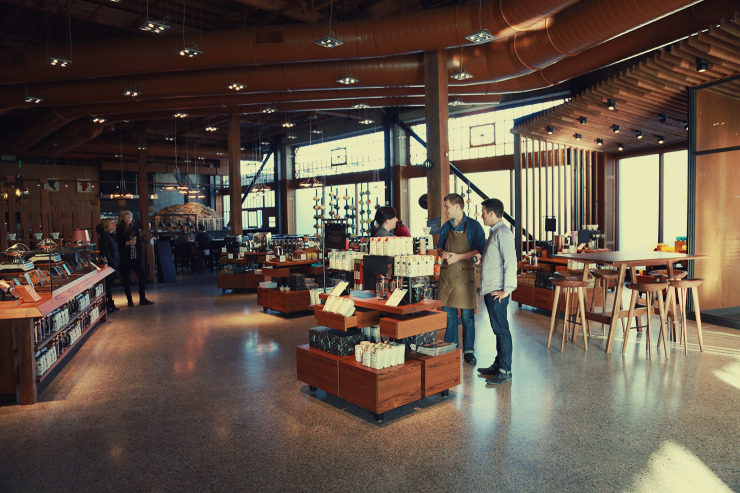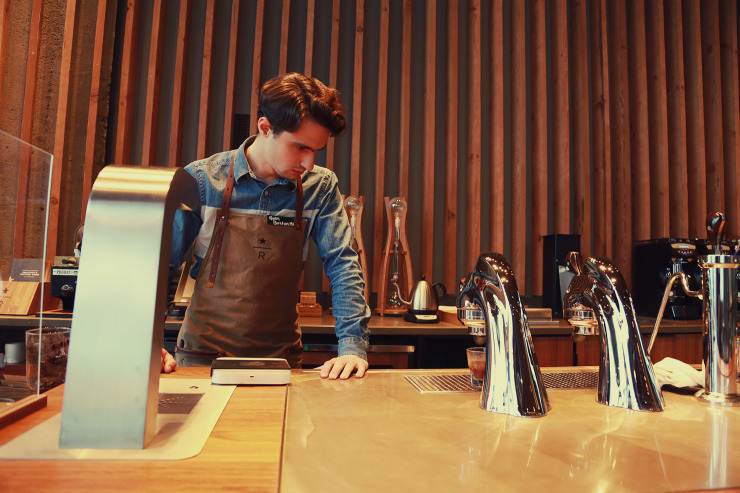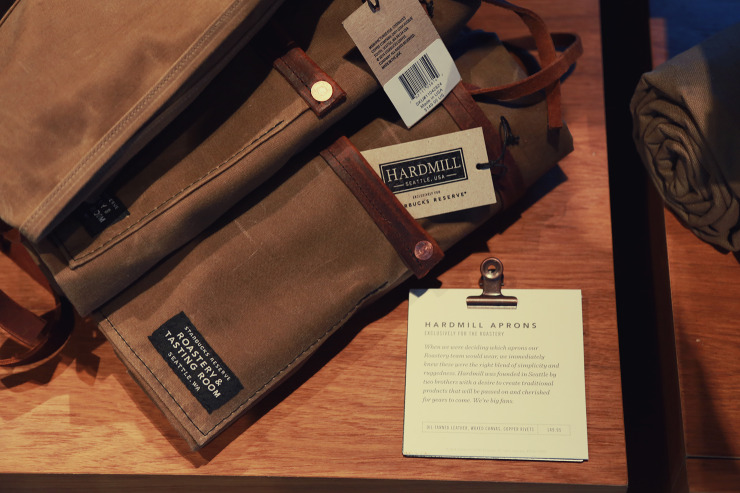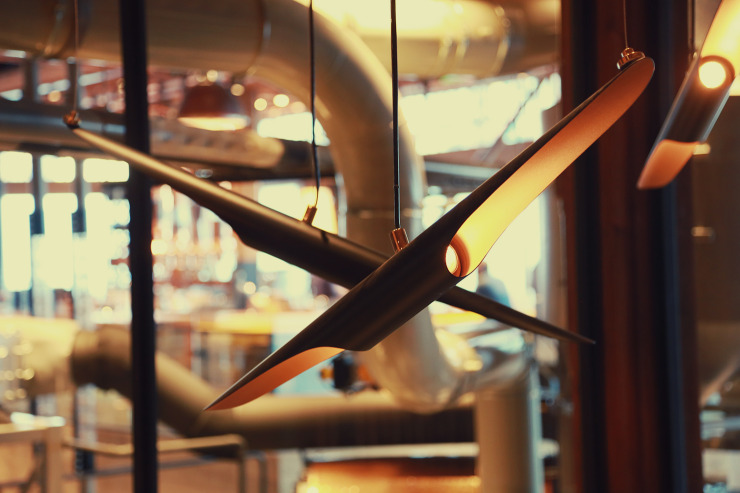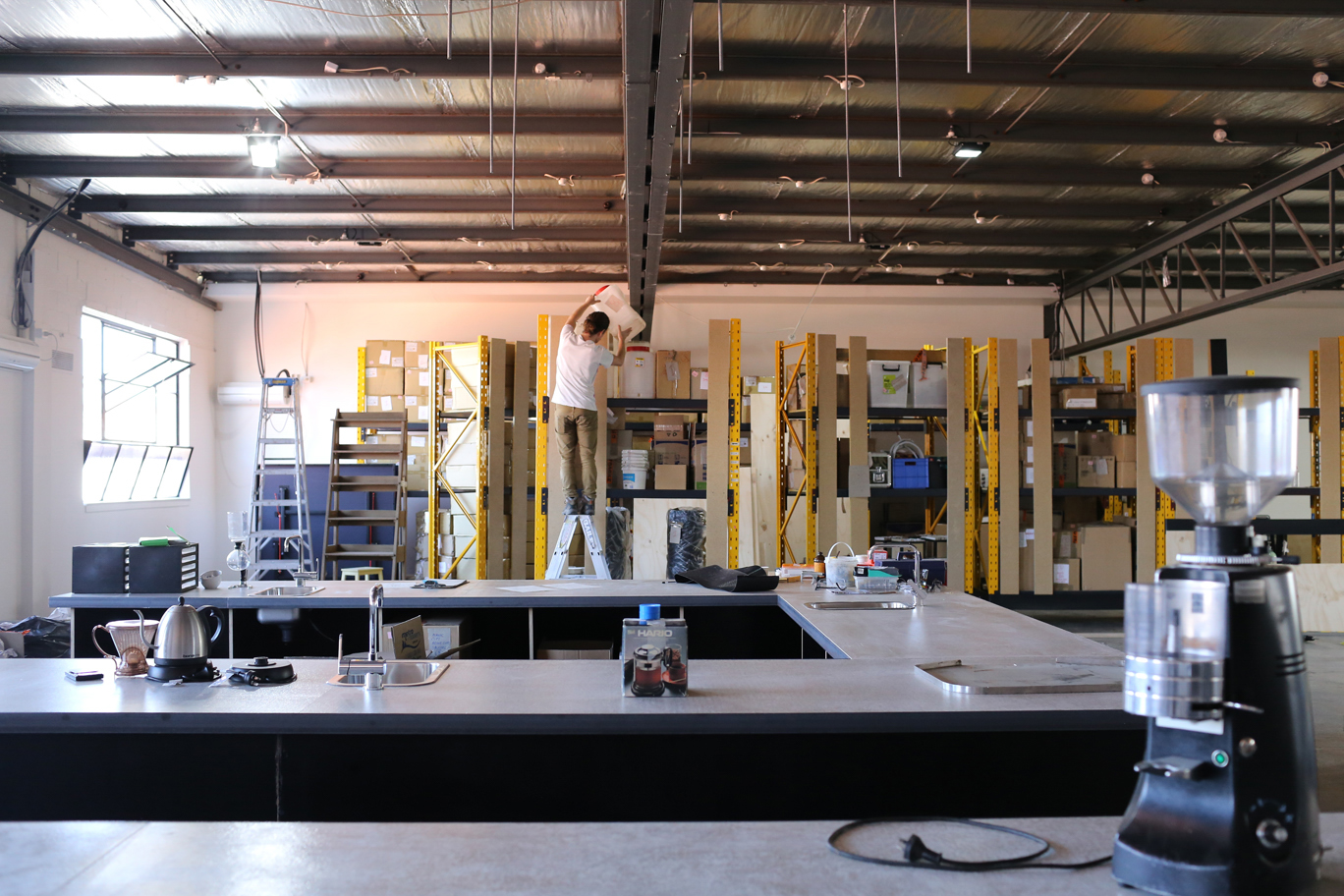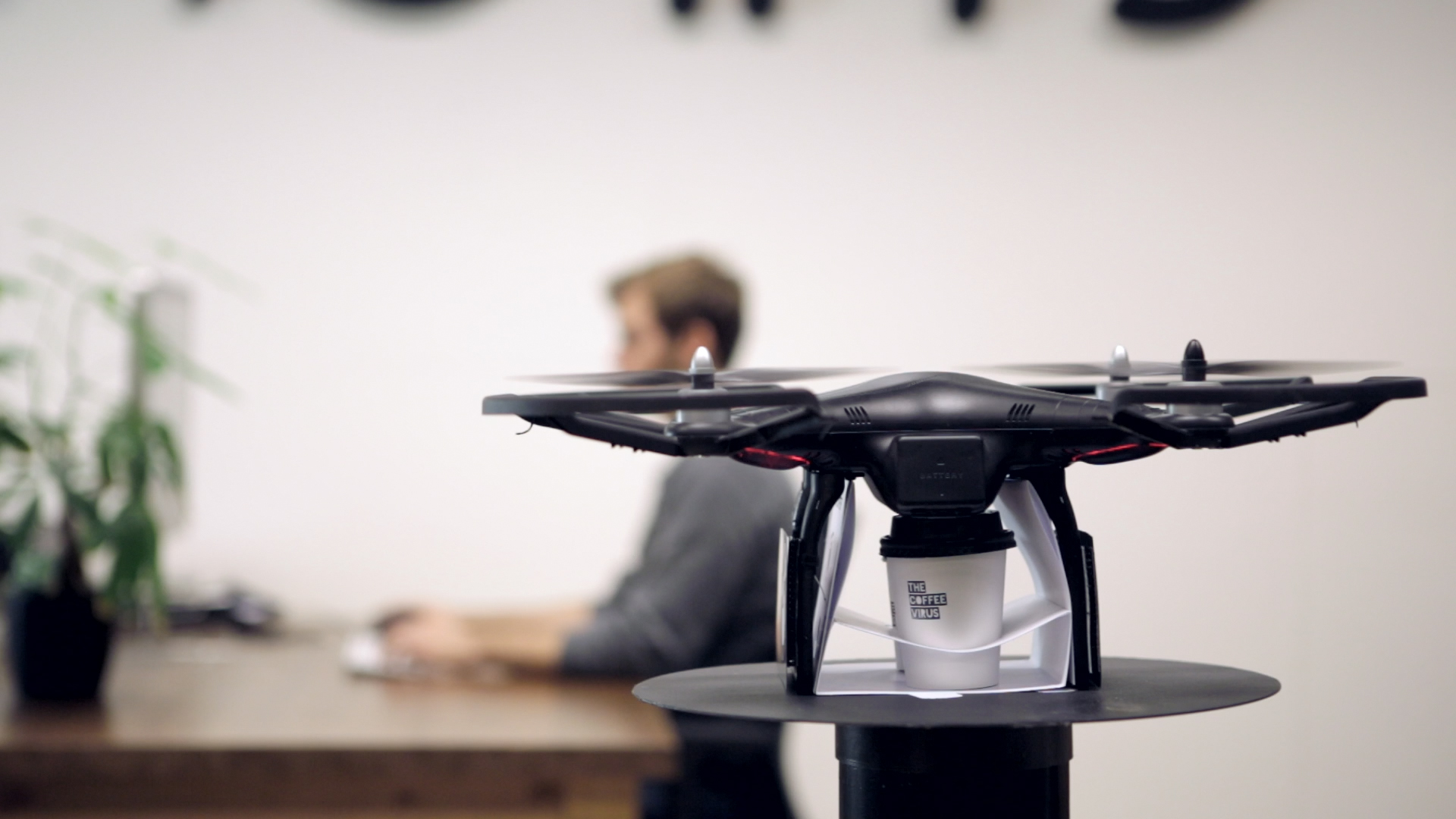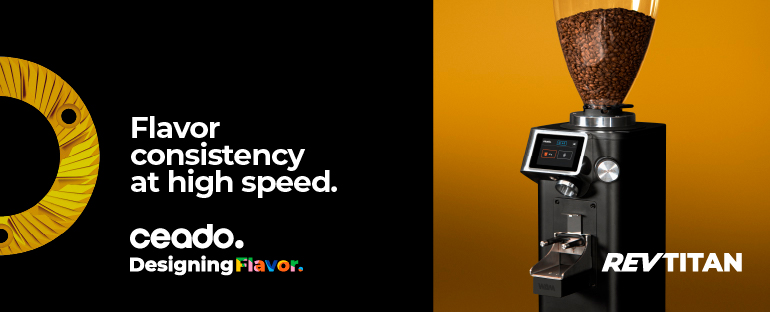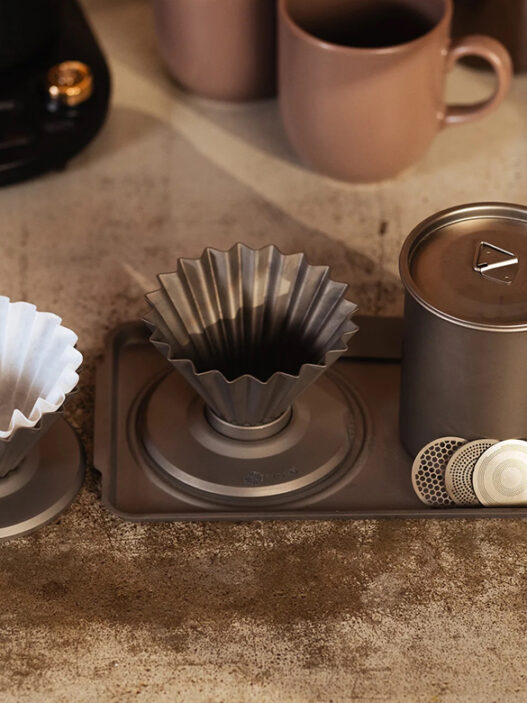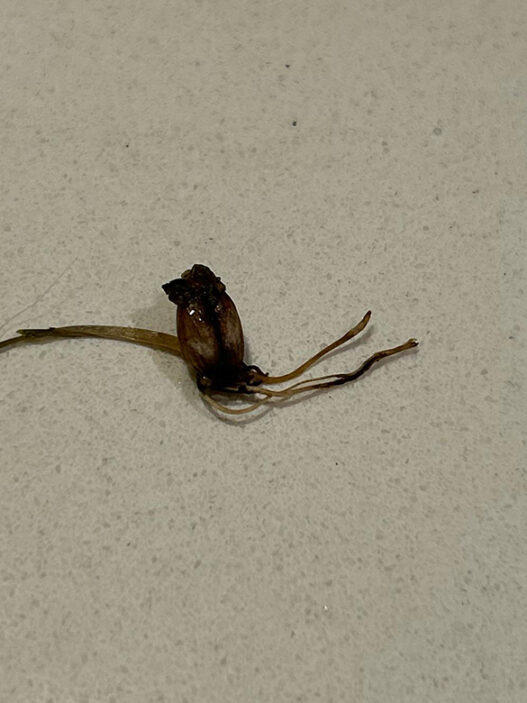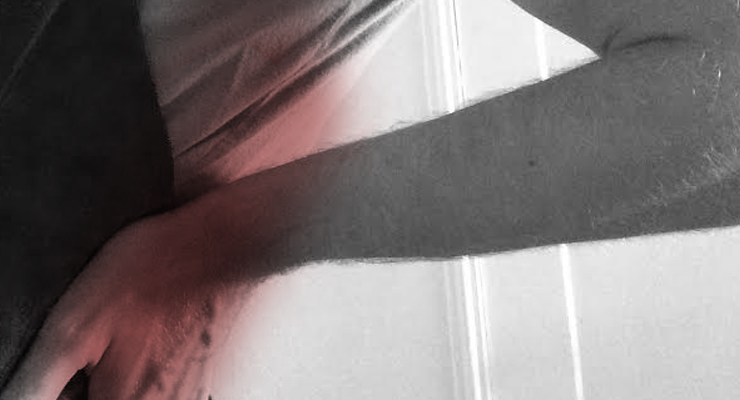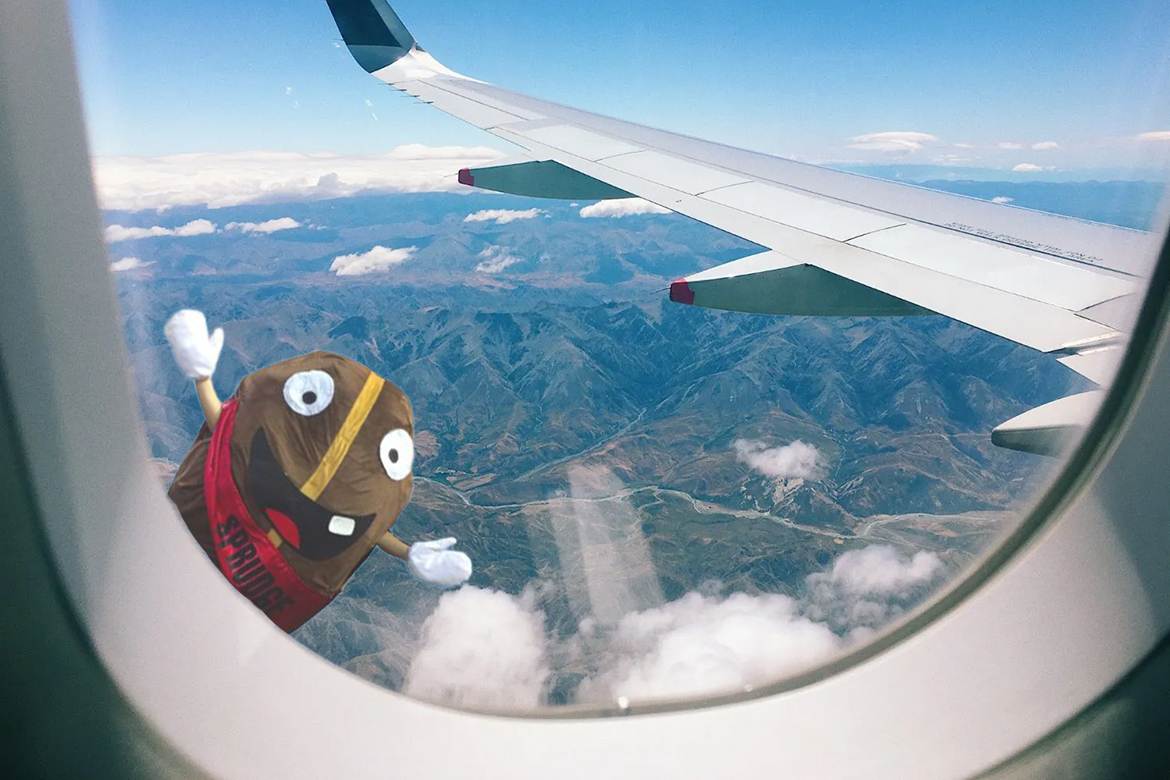Attending the press preview for the brand new Starbucks Reserve Roastery and Tasting Room, located on the corner of Pike & Melrose in Seattle’s Capitol Hill neighborhood, was a peculiarly full-circle experience. Starbucks was founded in 1971 just 9 blocks away from the new roastery, down the slope of Seattle’s cityscape towards the sea. Sprudge was founded in 2009 less than 3 blocks from here, in the Stumptown Coffee location on Pine Street, one of the many independent coffee houses that helped make Capitol Hill the epitome of desirable Seattle cool.
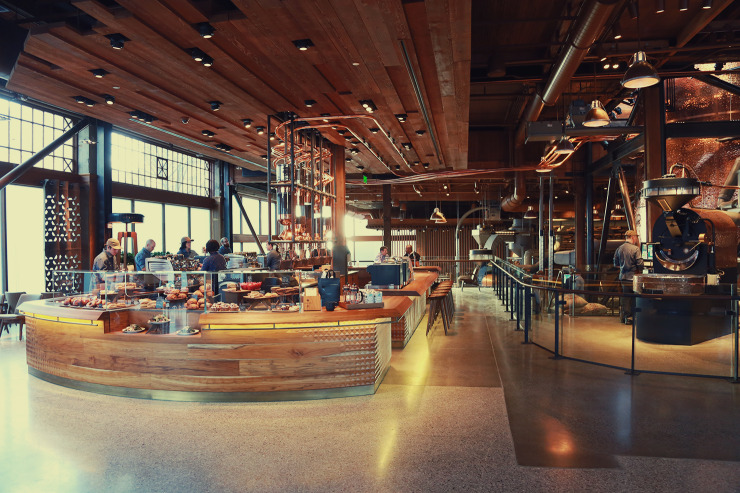
High-end coffee has changed a lot in those five years, and so has Seattle. Starbucks’ gargantuan new shrine to craft maximalism opens Friday, December 5th amidst an influx of new condo construction and a radically changing retail landscape on the Hill. As with all such changes, there are many pros and cons, with an insistent drive for development thrumming underneath.
This shining new jewel in Starbucks’ crown could be a bold new leap for specialty coffee as a whole. It could also be an overwrought flop with fundamental conceptual problems.
You, dear reader, should visit this space and see it for yourself. Walking around the carefully polished preview, before the crowds descend, it was easy to catch reflections of both possibilities in the acres of chrome, teak, and copper. Or maybe it’s neither? Perhaps this is just what the future of specialty coffee looks like, an increasingly blurry line between independent coffee culture and corporate coffee progress. The one thing I do know to be absolutely true about the new Starbucks Reserve Roastery and Tasting Room is that it is endlessly fascinating.
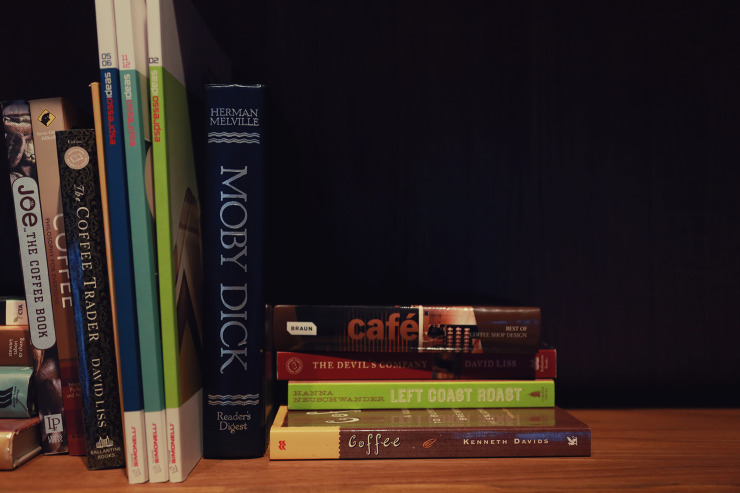
It’s challenging to convey the enormity of this place. It’s 15,600 square feet, built to LEED specifications, with ceilings that range from 17 to 20 feet high throughout. It has two levels. The top floor features an espresso & brewed coffee megabar, a gift shop, a scoop shop, a shiny brand new 25-kilo Probat roaster, bar seating and lounging areas, a full array of baked goods and salads made on site, and a full-service pizza restaurant from Seattle celebrity chef Tom Douglas. The lower level has a 120-kilo Probat roaster (also brand new), a “Coffee Library” area with telecommunications hookups and dozens of books, and a “Coffee Experience Bar” featuring Modbar brand steam wand taps, a bank of Bonmac siphon brewers, and a pour-over bar of proprietary Starbucks ceramic cones. This lower level also offers more lounge-style seating, bar seats at the “experience” counter, and ampitheater-style steps perfect for gathering a crowd for speaking engagements. This entire lower level is available for rent for corporate events and private meetings.
Even now, having explained what happens inside the cafe, I’m not sure I’ve properly captured the space’s scale. And the most important detail is in the entrance—this roaster/retail/private events/pizza bar/showcase/library/coffee palace, all 15,600 square feet of it, is served by one single massive front door. It’s an exercise in entryway theatrics that makes the cafes this space is clearly inspired by—Four Barrel Coffee and Sightglass Coffee, both in San Francisco—seem Lilliputian by comparison.
The coffee service area itself is shaped like an oval, with espresso on one side, brewed coffee on the other, and a pastry case front and center—and echoes to how the bar flows at the original Sightglass roastery. To the left there’s a bank of two Victoria Arduino Black Eagle espresso machines, serviced by a Stormtrooper brigade of Nuova Simonelli Mythos 1 ClimaPro espresso grinders. For those not up on the hip coffee gear, let us assure you that this equipment is all brand new, state of the art, and very much to trend for what you might find in a popular contemporary coffee bar not owned by Starbucks.
To the right you’ll find a thoroughly modern brew bar, serviced by three Modbar water taps (for Chemexes and such), two Clover by-the-cup brewers, Ditting grinders, and Acaia scales. Again, this is very much to trend and contemporary, save for the Clover, which enjoyed a brief vogue amongst independent cafes before being absorbed by Starbucks in 2008.
The service oval is bisected down the middle by individually designed showcase “silos”, fed with fresh beans by a series of copper pneumatic tubes. These tubes have glass cut-out points along their respective tracks, so that one can actually watch as beans get rushed and whooshed along the ceiling of the cafe, en route to their jewel-like silo Gethsemanes—the penultimate waiting point before the inevitable death by grinder. Finally, these silos feed 25-pound brass baskets from which baristas can draw fresh coffee beans to restock their individual grinders.
One of the loveliest details in the shop is something you might blink and miss on your first visit. The ovoid coffee bar that dominates the main floor has its edges softened by intricate lattice-like woodwork, texturing the rounded corners of the teak bar into something like embroidery or lace. These textured corners are lit from above by simple golden LED lights. The end result is subtly beautiful.
“It’s for the theater of it all,” I’m told by Tiffany Broderson, VP of operations for Starbucks Reserve and the new roastery. The entire brewing area can handle up to 4 different espresso and six brewed coffees at a time. “This roastery gives us the opportunity to be nimble,” Broderson says, and as if by illustration, a fresh puff of beans goes schoomping by above our heads.
On my visit I met a barista named Ellen Terry, plucked from one of the company’s extremely popular University Village stores in Seattle. “This is a bit more back to the roots,” she tells us, preparing a shot of Starbucks’ new Pantheon™ Blend, offered exclusively at the new roastery. The espresso is described in miniature on the printed menu, with notes of lemon, dark chocolate, and just a bit of brown sugar—all of which matched the flavors I found in my enjoyable and well-prepared shot. The cafe offers multiple single origin espressos, including Sumatra Peaberry and Colombian options, and decaf. The espresso menu is rounded out by a set of signature drink options. “At competitions they do signature drinks that just incredible,” Terry says, and I nod with familiarity. “We’re very excited to be able offer something like that here.”
The sig drinks at this new Starbucks include your standard shakerato, a shakerato bianco with sweet cream, an iced sparkling espresso with mint, and something called the Americano con crema—espresso, water & orange-piloncillo syrup, coffee foam and demerara syrup. This last drink, the con crema, with its nod to molecular gastronomy and a complex infusion base, does indeed feel ripped from the annals of the global competitive coffee syrup-craft, and is as about as far from a Frappuccino® as you can get while working in the same milieu.
Around 30 to 35 baristas will staff the cafe in total, including several unconventional cafe service positions. The shop will feature “Coffee Ambassadors” from as far away as China and Scotland, as well as roving “table touch” servers, equipped with mobile POS systems to take orders from seated patrons in the cafe’s many lounge areas. There will be someone staffing the cafe’s “scooping bar” at all times, the effect of which is reminscent of the scoop shop experience at Porto Rico in New York City, or at a boutique ice cream shop. And indeed, even the upstairs roasting area makes for an unconventional Starbucks job, with roasters plying their craft on the floor of the cafe, in full view of the anticipated throngs. I spoke to one such showcase roaster, a guy named Joshua Read, and asked him how he felt about the coming onslaught of roasting questions and queries. “Most of us had our start in retail,” Read tells me with a knowing smile, “and besides, the whole point of this place is transparency.”
All of the company’s Reserve coffee offerings will be roasted here, with production estimated at 1.4 million pounds in the first year.
We also spoke extensively with Andre Kim, the senior concept designer for this store. Walking through the shop with Mr. Kim was not unlike talking with a proud new parent: there are the details you know to ask about, and then there are the details only he would think to share. This cafe began life in the 1920s as a Packard automobile dealership, part of the old “auto row” that formed Seattle’s Pike/Pine corridor in much earlier days. Several original features of that building have been maintained for the cafe, including the exterior facade, the speckled floors, and much of the ceiling (which has been modified slightly with acoustic baffling). 95% of the store’s materials are made in the United States, Kim tells us, and the shop’s individual features are a who’s who of design collaboration: walnut chairs and stools by BassamFellows; steel and teak tables by Uhuru Brooklyn; marble Atlas tables by DWR; six-foot tall lamps by Amiga Light, inspired by “the Space Needle and latte art”, respectively; and Coltrane-style suspension light fixtures in the lower floor’s aforementioned Coffee Library, outfitted with books chosen in part by Major Cohen, Starbucks’ senior project manager of global coffee engagement and a beloved figure at the company.
Did I forget to talk about the pizza place? There’s a pizza place inside this cafe. It’s called Serious Pie, it’s where they make all the from-scratch pastries and cakes being served at the coffee bar, and it’s helmed by Tom Douglas, a multiple James-Beard-Award-winning chef who has been at the forefront of Seattle dining for two decades, which is a very difficult thing to do. This Serious Pie will be Douglas’ third location; another exists on Virginia Avenue in Belltown and a co-location with Douglas’ Serious Biscuit exists in Westlake. It should also be noted (since I’m way over word count already) that Mr. Douglas’ dry spice rub for salmon is the shit.
This is, of course, not the first foray into large-scale cafe design for Starbucks, nor is it the first time Starbucks has put manual espresso machines and pour-over bars into their cafes. But I asked Andre Kim if there was any previous project that had particularly inspired or informed the company’s new Pike showcase, and he was quick to answer no. “This cafe is from scratch and inspired by Reserve”, he told me. “It is an amphitheater of coffee.” That description is hard to argue with, particularly with regards to the lower level, whose tiered seating and stairs share a similar style to the ones found at Intelligentsia’s Venice cafe, itself an echo of the Odeon of Herodes Atticus. The stairs are framed by an intricate wooden balustrade, inspired by the manner in which coffee is raked and dried on processing patios. It’s perhaps the loveliest detail in the shop.
No, actually, the loveliest detail in the shop is the gigantic copper shell that dominates the lower level production floor, and is visible from nearly all points in the cafe. Inside the shell are ten more silos for roasted coffees, and at night, when the lights are dimmed, seemingly random perforations on the copper shell coalesce to reveal a map of the world.
Did I forget to talk about the merch store too? The merch store at this Starbucks could probably be its own article, as it features a wide range of ceramics from artists like Foxtail Pottery, Five Lines Pottery, and Glassybaby, plus all manner of “lifestyle finds”, from Hardmill Leather aprons and coasters to custom letterpress small print cards & notebooks. You can also buy Nuova Simonelli’s at-home espresso machine, the Oscar, for sale here, alongside scales, grinders, pour-over kits, and Chemexes.
Starbucks is an enormous publicly traded coffee company with locations large and small all over the planet. But it’s also a company made up of individuals, people with their own passions and whims and ideas about how to represent their company’s vision of what coffee is, where it’s going, and how to express that. Somebody loves this new cafe. Indeed, a great many number of somebodies have poured heart, soul, sweat, and time into loving this cafe and making it something special. Depending on your perspective, it is either an exciting new tentpole for the brand—this is who Starbucks is now!—or a shot across the bow of the wider specialty coffee world.
It’s an overused metaphor, but the cafe is kind of a Rorschach test—your impressions of the place will be deeply affected by your own feelings about Starbucks. Starbucks politely declined to share a final price tag for the Reserve Roastery and Tasting Room, but with at least a million dollars sunk into equipment alone by our calculation, clearly no expense was spared. It might be the most ambitious and exciting cafe concept to open in North America in 2014. It might be a dud, destined for a major reboot, and remembered like how we think of all those old Niketown retail experiences that popped up in the 90s, with their pneumatic tube whimsy and forced industrial chic.
A cynic will see shades of the Cheesecake Factory in the cafe’s vastness, in its copper tones and flipbook menus and personably corporate take-home merch. An idealist will see this cafe as an enormous possibility for widening the consumer base for specialty coffee, for bringing countless new converts in to the theater of pour-over, the elegance of professional espresso service, and the exciting possibilities in service interactions presented by new technology like the Modbar. Design geeks both amateur and professional will drool. Coffee nerds may even cede points to the restrained and understated roast profiles of some of the Reserve offerings. Small business boosters will bemoan the literally dozens of other coffee shops within blocks of the store, left standing in the shadow of Starbucks after this place opens. Capitol Hill lifers who have been going to Vivace, Vita, Stumptown and Victrola already for years are unlikely to alter their routine. But who is to say what the Hill’s most recent transplants will want in their daily cafe? This place will inevitably be some young person’s first experience with big city coffee, with the kinds of cafes that make you want to learn things.
Diehard Starbucks brand loyalists (of whom there are thousands upon thousands) from across the world will start booking their pilgrimages. Coffee elites will roll their eyes, while wondering aloud whether their favorite cafe has been ripped off in any appreciable way by the space. Throngs of stroller moms and jogger dads and other upwardly mobile Seattle types will buy coffee and pizza and merch and biscuits and beans to take home from this place. And journalists will line up to cluck, bray, construct think pieces, copy and paste press releases, and author word upon word about Starbucks, and this remarkable new cafe, and the global brand’s heartfelt bid for a seat at the specialty coffee cool kids’ table.
You’d be foolish not to to see it for yourself.
Jordan Michelman is the co-founder and senior editor at Sprudge.com. Read more Jordan Michelman on Sprudge.
All photos by Zachary Carlsen for Sprudge.com.




